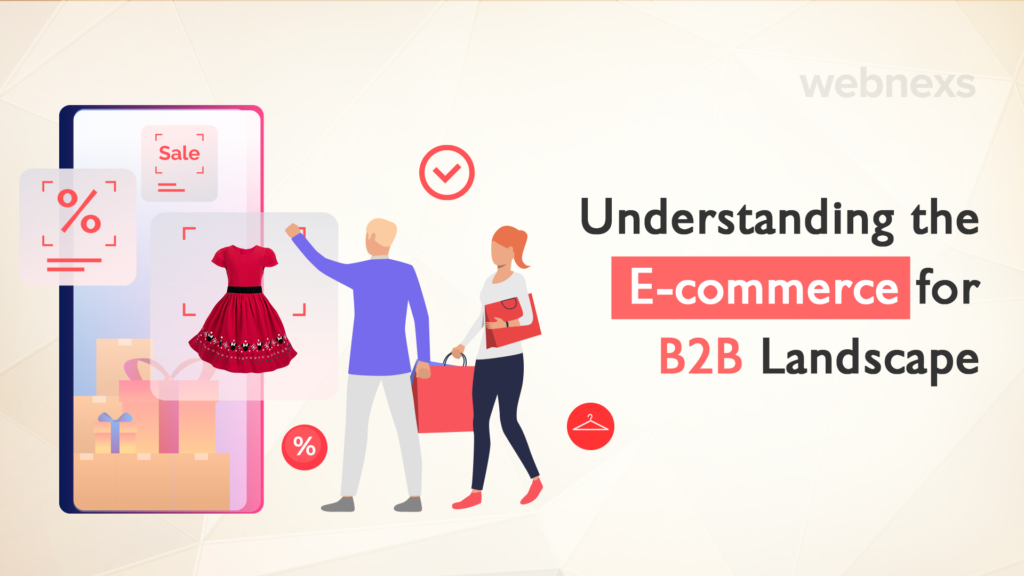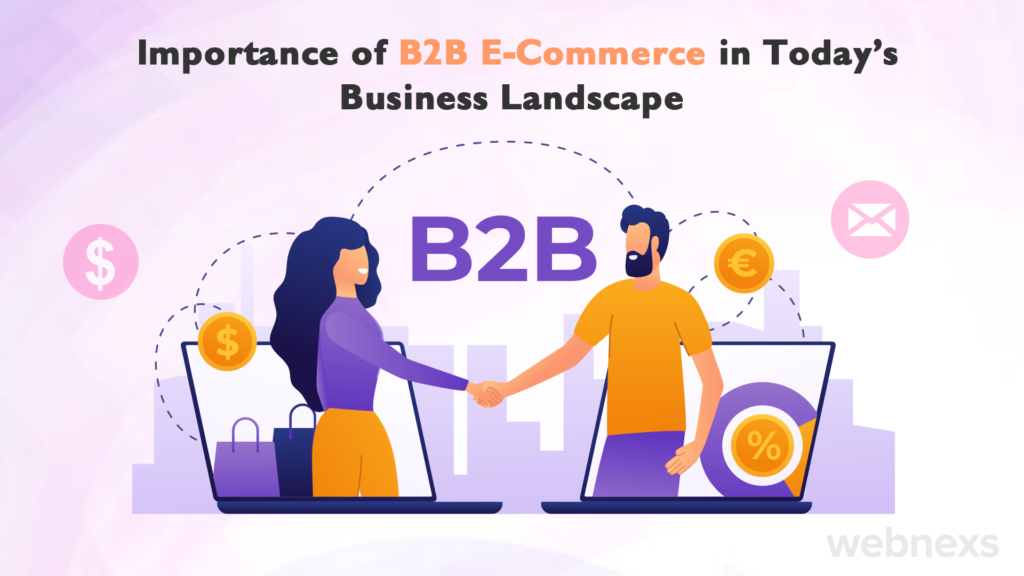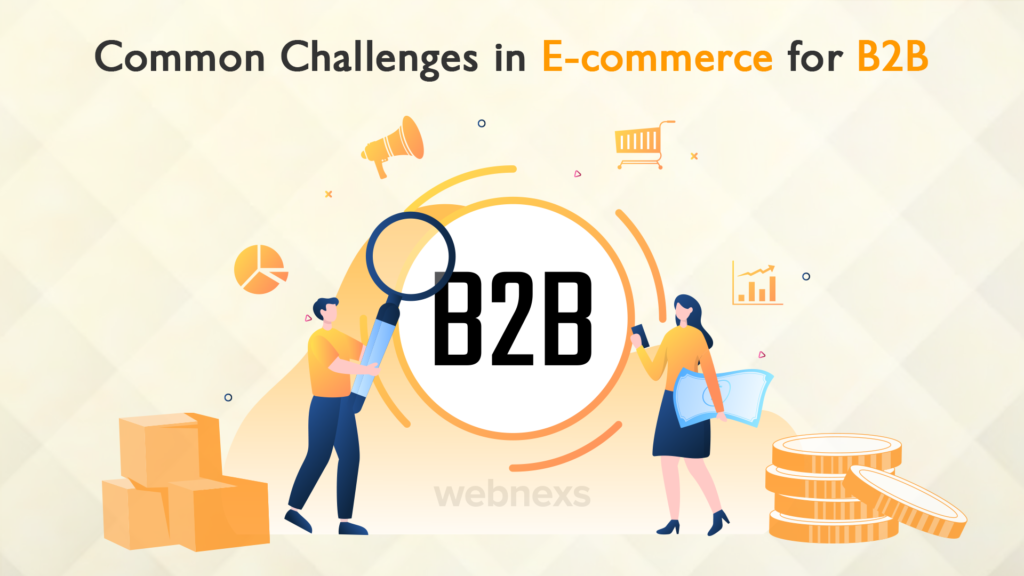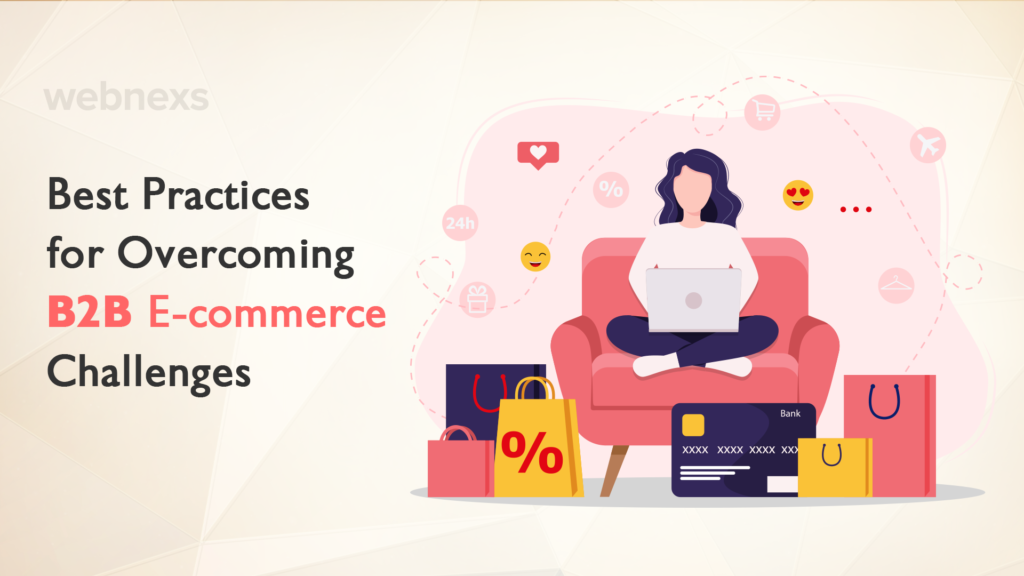In recent years, B2B ecommerce has experienced significant growth, with spending on B2B platforms projected to increase from $1.18 trillion in 2018 to $1.52 trillion by 2023, as reported by Forrester. Traditional techniques are being overshadowed by the rise of online platforms, allowing businesses to enhance operational efficiency and achieve growth. However, alongside these benefits, businesses must navigate through various challenges, requiring calculated actions and intelligent solutions.
Whether you’re a well-established enterprise or a budding startup, this comprehensive guide will equip you with the necessary skills and insights to thrive in the fiercely competitive realm of B2B eCommerce.
Understanding B2B Online Business

Today’s B2B buyers are significantly increasingly tech-savvy, to the extent that a McKinsey & Company report reveals that approximately 65% of B2B companies across industries conducted complete online transactions in 2022. Buyers, who desire self-empowerment, aim to navigate through much of the buying process independently, as highlighted by an Accenture report indicating that by the time they engage with a representative, they have already progressed about 57% of the way. This inclination towards self-research is advantageous, considering the rising caution among buyers, leading to more than 79% of unidentified calls being unanswered.
However, buyers are also becoming more demanding and have heightened expectations, influenced significantly by their personal buying experiences. Popular platforms like Amazon have shaped these expectations, leading customers to anticipate features such as quick page loading, user-friendly on-site search, comprehensive product imagery, and self-service options.
Market Trends and Growth Opportunities:
- B2B ecommerce is consequently rapid growth, with more businesses recognizing the benefits of online sales channels.
- Marketplaces and platforms specifically designed for B2B ecommerce, such as Wcart, Amazon Business, and Shopify Plus, are gaining prominence.
- Mobile commerce and omnichannel strategies are becoming increasingly significant in the B2B space.
Importance of B2B Ecommerce in Today’s Online Business

B2B ecommerce has become an essential component of today’s business environment as more companies embrace online platforms. The rapid digitalization of commerce has made B2B ecommerce not just a choice but a crucial requirement. This shift is basically by the increasing demand for efficient, cost-effective ways to conduct business and the necessity to reach a broader customer base.
Additionally, B2B ecommerce empowers businesses to streamline their supply chains, minimize errors, and make informed decisions based on real-time data insights. Therefore, the significance of B2B ecommerce lies in its ability to foster growth, enhance operational efficiency, and unlock new opportunities for businesses in the dynamic digital landscape.
Top 10 B2B Ecommerce Challenges

B2B ecommerce is a realm that presents distinctive hurdles for businesses striving to thrive in the digital marketplace. Below, we delve into some of the prevalent challenges encountered by B2B ecommerce enterprises:
1. Complexity in Pricing and Payment Structures:
B2B transactions often entail intricate pricing models, encompassing tiered pricing, volume discounts, and customized pricing based on customer relationships. Payment methods also tend to be more multifaceted, with invoicing and purchase orders prevailing over simple credit card transactions.
2. Integration with Existing Systems and Platforms:
Seamless integration with pre-existing systems, such as inventory management, CRM, and ERP systems, is crucial for streamlined B2B ecommerce operations. Furthermore, integrating with other ecommerce platforms, marketplaces, and third-party services can present its own set of challenges.
3. Security and Fraud Prevention:
Given the substantial sums of money involved, B2B transactions are inherently more susceptible to fraudulent activities. Businesses must implement robust security measures such as two-factor authentication, encryption, and fraud detection tools to safeguard themselves and their customers.
4. Customer Experience and Support:
B2B buyers have high expectations when it comes to personalized service, including tailored pricing, swift response times, and efficient order processing. So, providing effective customer support through channels like live chat, phone assistance, and self-service options can be demanding.
5. Shipping and Logistics Management:
B2B orders often entail larger volumes and more intricate shipping requirements than B2C orders. Managing logistics and supply chain processes effectively becomes paramount to ensure timely delivery and cost minimization.
6. Inventory and Fulfilment Management:
Efficient management of inventory and fulfillment processes is essential for B2B ecommerce businesses to ensure product availability and accurate order processing. The extensive range of products and variations offered in B2B catalogs makes inventory management a challenging task.
7. Competition with Established Marketplaces:
Dominant B2B marketplaces and ecommerce platforms like Amazon Business and Alibaba pose formidable competition. Businesses must differentiate themselves by offering unique value propositions, be it specialized products or personalized services.
8. Keeping Pace with Evolving Technology and Trends:
B2B ecommerce technology is in a constant state of evolution, necessitating businesses to remain up-to-date with the latest trends and tools. This can be particularly challenging for smaller businesses operating with limited resources.
9. Building and Sustaining a Loyal Customer Base:
Cultivating and maintaining long-term customer relationships is significant in B2B ecommerce. Hence offering exceptional service, customized solutions, and personalized pricing aids businesses in establishing and nurturing a loyal customer base.
10. Ensuring Regulatory Compliance:
B2B ecommerce businesses must adhere to an array of regulations, including data privacy laws and tax regulations. Compliance can pose challenges, especially for businesses operating across multiple jurisdictions.
Overall by comprehending these prevalent challenges, ecommerce businesses can formulate effective strategies to surmount them successfully.
Read More: To Know About Latest Trends in Ecommerce
10 Best Solutions for B2B Ecommerce Challenges

To overcome the challenges faced by B2B ecommerce businesses, it is significant to adopt best practices that optimize operations and drive success. Hence there are some effective strategies and practices to help navigate and overcome common challenges in B2B ecommerce:
1. Simplify Pricing and Payment Structures:
- Streamline pricing models by offering clear and transparent pricing structures.
- Implement an automated pricing system that can handle complex pricing rules and customization.
- Provide flexible payment options, including credit terms, invoicing, and secure online payment gateways.
2. Invest in Seamless Integration:
- Choose an ecommerce platform that seamlessly integrates with existing systems, such as ERP, CRM, and inventory management.
- Implement robust API solutions to facilitate data synchronization and real-time updates between different systems.
3. Prioritize Security and Fraud Prevention:
- Implement SSL encryption and secure payment gateways to protect sensitive customer information.
- Utilize fraud detection tools and systems to identify and prevent fraudulent transactions.
- Educate employees and customers about security best practices to minimize vulnerabilities.
4. Enhance Customer Experience and Support:
- Offer personalized experiences through customized pricing, product recommendations, and targeted marketing campaigns.
- Provide multiple communication channels for customer support, such as live chat, email, and phone support.
- Implement self-service portals to empower customers with order tracking, account management, and access to resources.
5. Optimize Shipping and Logistics Management:
- Partner with reliable shipping carriers and negotiate competitive rates for efficient delivery.
- Implement order tracking and real-time visibility to keep customers informed about their shipments.
- Utilize inventory management systems to optimize stock levels, reduce backorders, and improve fulfillment speed.
6. Efficiently Manage Inventory and Fulfillment:
- Utilize inventory management software to track stock levels, manage SKUs, and automate reorder processes.
- Implement real-time inventory synchronization between online platforms and backend systems to ensure accurate stock availability.
- Employ efficient picking, packing, and shipping processes to minimize errors and improve order fulfillment speed.
7. Leverage Differentiation and Niche Focus:
- Identify a unique selling proposition or niche market to differentiate from larger B2B marketplaces.
- Focus on providing specialized products, expertise, or exceptional customer service to attract and retain customers.
8. Stay Ahead of Technological Advancements:
- Regularly assess and adopt emerging technologies relevant to B2B ecommerce, such as AI, machine learning, and automation.
- Keep up with industry trends, attend conferences, and network with peers to stay informed about the latest advancements.
9. Nurture Customer Relationships:
- Implement a customer relationship management (CRM) system to effectively manage and nurture customer relationships.
- Offer personalized interactions i.e. tailored recommendations, and exclusive deals to foster long-term loyalty.
10. Ensure Regulatory Compliance:
- Stay updated with relevant regulations, such as data privacy laws and tax requirements, and ensure compliance.
- Implement measures to safeguard customer data, obtain necessary certifications, and adhere to industry-specific regulations.
Overall by implementing these best practices, online businesses can overcome challenges, enhance operational efficiency, and deliver exceptional customer experiences, leading to long-term success in the competitive digital marketplace
Final Thoughts
In summary, B2B businesses can achieve success by tailoring their strategies to meet the unique needs and preferences of their customers. By promoting strong relationships and continuously analyzing performance metrics for strategic improvements, businesses can drive growth and achieve their goals. Using a platform like Wcart, can grow, and gain a competitive advantage over their competitors and improve customer satisfaction. If you have any queries, contact our Wcart ecommerce expert team.
Frequently Asked Questions(FAQs)
What is B2B ecommerce?
It refers to online business transactions conducted between two or more companies. It involves the buying and selling of goods or services between businesses through digital platforms or websites specifically designed for B2B transactions.
How does B2B ecommerce differ from B2C ecommerce?
B2B transactions such as larger order volumes, longer sales cycles, and more complex pricing structures. B2B platforms often include features such as bulk ordering, negotiated pricing, and integration with business systems like ERPs or CRMs, which are not typically found in B2C ecommerce.
What are the advantages of B2B ecommerce for businesses?
It offers moreover advantages for businesses, including increased efficiency, expanded reach, and improved customer experience. However, it allows businesses to streamline their purchasing processes, access a wider range of suppliers and customers, and provide self-service options to their clients.
How can B2B ecommerce improve customer satisfaction?
By providing self-service capabilities, personalized pricing, product catalogs, real-time inventory information, and streamlined order management. However, they enable buyers to access relevant product information, make purchases at their convenience, and track their orders online.
What challenges should businesses consider when implementing B2B ecommerce?
Implementing B2B ecommerce can presently face some challenges that businesses need to address. Since they include integrating the ecommerce platform with existing business systems, managing complex pricing structures and customer-specific catalogs, ensuring data security and privacy, and adapting internal processes to support online transactions.




Leave a Reply